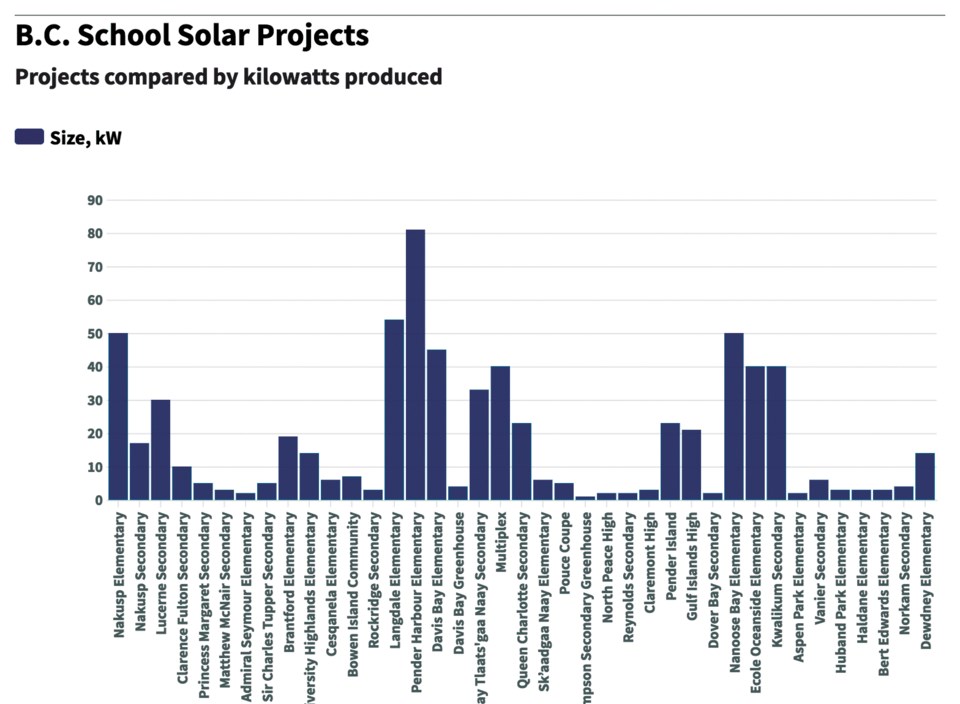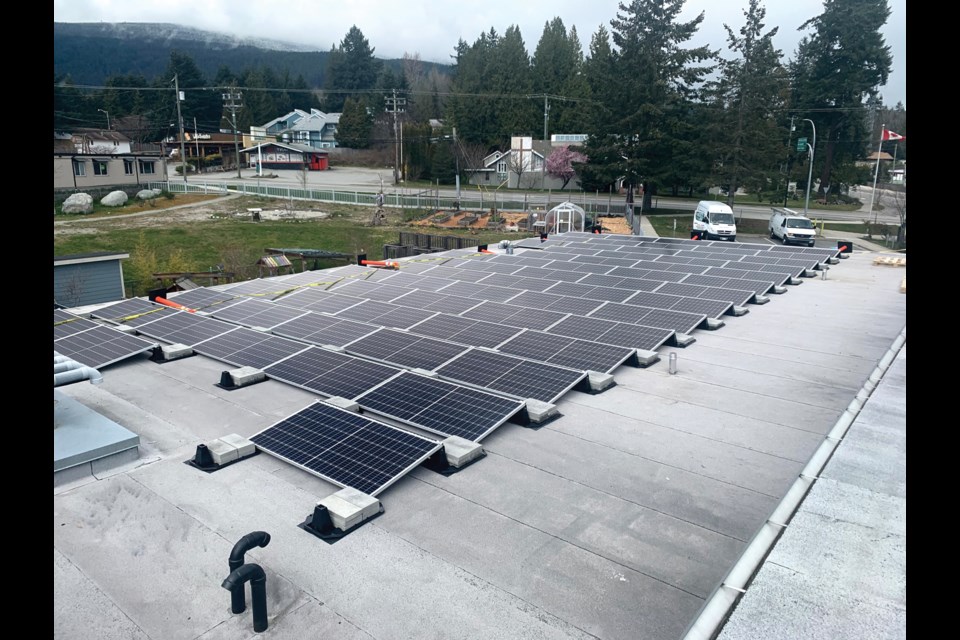School District No. 46 (SD46) is bolstering its sunny ways with additional solar installations at three of its elementary schools, making it far and away the largest producer of solar energy of any school district in the province.
Work is nearly complete on an array on the roof of Gibsons Elementary – and at an April 8 board meeting, SD46 trustees voted unanimously to approve a capital plan that includes installations at Kinnikinnick and Halfmoon Bay elementary schools.
The installations “will further add to our sustainability in the district and go towards reducing our carbon footprint and increasing our efficiency, and we’re thrilled that the ministry approved those,” said secretary treasurer Nicholas Weswick at the meeting.
With solar arrays already in place at Langdale Elementary, Davis Bay Elementary and Pender Harbour Secondary, these three additional projects bring facilities manager Rob Collison nearly halfway towards his goal to have the district’s 13 schools powered by solar.
“We’re excited to keep going with this stuff, and excited to have support from the board,” Collison told Coast Reporter.

Once the Gibsons project is complete, the school district will have the capacity to generate 284 kilowatt hours – more than twice that of the second highest producer, Qualicum School District, which has three installations totalling 130 kilowatts. Vancouver School Board has two schools producing seven kilowatts.
There are 39 schools in the province with solar installations hooked into BC Hydro’s grid with a total capacity of 682 kilowatts.
Direction from the strategic plan and long-term capital planning has allowed the school district more flexibility to spend on solar than other districts, Collison said. “We’ve done a good job keeping on top of our major building components like roofs over the years, so that we’re able to … look at the future more.”
Funding for the Halfmoon Bay and Kinnikinnick projects follows a strategy successfully used with past installations: permission was requested of the province to use leftover funds for heating system replacements. Designs are still in progress for both arrays.
The Kinnikinnick project is funded through a provincial Carbon Neutral Capital Program grant because in addition to the arrays, electric heat pumps will replace a gas-powered heating system. “We’re eliminating our carbon footprint,” Collison said. Heat pumps are more expensive, so the district will likely have to top up the $750,000 grant for the project.
Every installation at the district is hooked into BC Hydro’s net metering program, so excess energy produced is fed back into the grid, giving the school district a break on its electricity bill.
That creates a domino effect for savings, according to Collison, since utilities savings offset the cost of installing, which translates to reduced operating costs overall, ultimately freeing up money for other uses at the district. “That’s one of the main driving factors for these,” he said.
At Langdale Elementary, for example, more than 90 per cent of its energy comes from solar power.
Savings could also be big at Gibsons Elementary. Leftover annual facilities grant funding was used for that installation. At 100 kilowatts and about 350 panels, it will surpass Pender Harbour Secondary as the largest solar installation on any school roof in B.C.



